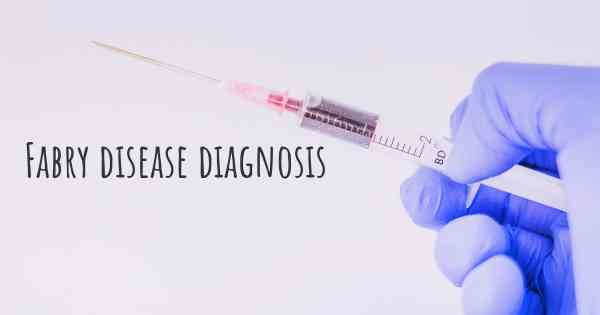How is Fabry disease diagnosed?
See how Fabry disease is diagnosed. Which specialists are essential to meet, what tests are needed and other useful information for the diagnosis of Fabry disease

Fabry disease is a rare genetic disorder that affects various organs and systems in the body. It is caused by a mutation in the GLA gene, which leads to a deficiency of an enzyme called alpha-galactosidase A (α-Gal A). This enzyme is responsible for breaking down a fatty substance called globotriaosylceramide (Gb3) or globotriaosylsphingosine (Lyso-Gb3). The accumulation of these substances in the body's cells and tissues results in the symptoms and complications associated with Fabry disease.
Diagnosing Fabry disease can be challenging due to its wide range of symptoms and the similarity of these symptoms to other conditions. However, early diagnosis is crucial to prevent or manage the complications of the disease. The diagnostic process typically involves a combination of clinical evaluation, family history assessment, and laboratory tests.
Clinical Evaluation:
The first step in diagnosing Fabry disease is a thorough clinical evaluation by a healthcare professional, such as a geneticist or a specialist in metabolic disorders. The doctor will review the patient's medical history, including any symptoms experienced and their progression over time. They will also perform a physical examination to assess for any characteristic signs of Fabry disease, such as skin abnormalities (angiokeratomas) or corneal opacities.
Family History Assessment:
Fabry disease is an inherited disorder, so it is important to assess the patient's family history. The doctor will inquire about any known cases of Fabry disease or related symptoms in the patient's immediate and extended family. This information helps in determining the likelihood of Fabry disease and can guide further diagnostic testing.
Laboratory Tests:
Several laboratory tests are used to diagnose Fabry disease and confirm the presence of α-Gal A deficiency. These tests include:
1. Enzyme Assay:
The primary diagnostic test for Fabry disease is an enzyme assay, which measures the activity of α-Gal A in the patient's blood or other biological samples. This test can be performed using dried blood spots, plasma, leukocytes, or cultured skin fibroblasts. A low or absent α-Gal A activity indicates a deficiency and suggests the presence of Fabry disease.
2. Genetic Testing:
Genetic testing is used to identify specific mutations in the GLA gene that cause Fabry disease. This test can be performed using a blood sample or other tissue samples. It is particularly useful in cases where the enzyme assay results are inconclusive or to confirm the diagnosis in individuals with a known family history of Fabry disease.
3. Biomarker Analysis:
In recent years, biomarker analysis has gained importance in the diagnosis of Fabry disease. One such biomarker is Lyso-Gb3, which is a specific lipid that accumulates in Fabry disease. Measuring the levels of Lyso-Gb3 in the blood or urine can help support the diagnosis of Fabry disease, especially in individuals with atypical symptoms or inconclusive enzyme assay results.
4. Tissue Biopsy:
In some cases, a tissue biopsy may be performed to examine the presence of Gb3 or Lyso-Gb3 accumulation directly. Skin or kidney biopsies are commonly used for this purpose. The collected tissue sample is analyzed under a microscope to assess the characteristic storage of these substances, which is indicative of Fabry disease.
Conclusion:
Diagnosing Fabry disease requires a comprehensive approach involving clinical evaluation, family history assessment, and laboratory tests. The primary diagnostic tests include enzyme assay and genetic testing, which help identify α-Gal A deficiency and specific GLA gene mutations. Biomarker analysis and tissue biopsy may also be utilized to support the diagnosis. Early detection of Fabry disease is crucial for initiating appropriate treatment and management strategies to improve the patient's quality of life.
Also get checked if you don't sweat enough (hypohidrosis) or have reduced organ function (especially kidney failure) or corneal whirling (looks like a cloud in your eye).
Posted Jun 30, 2020 by Fabry Father 1100








